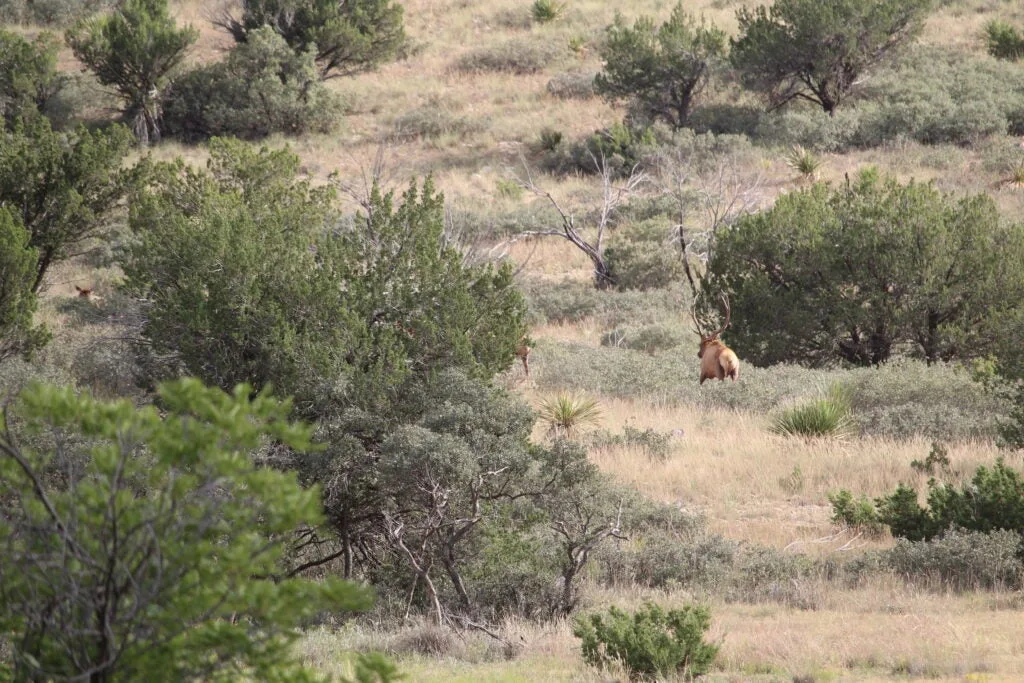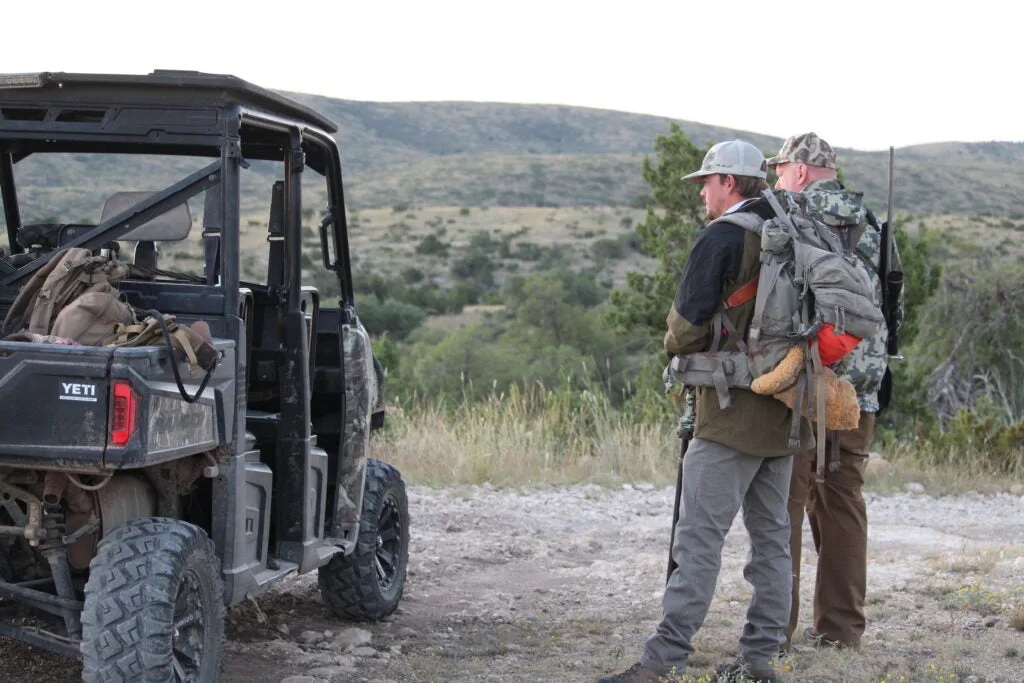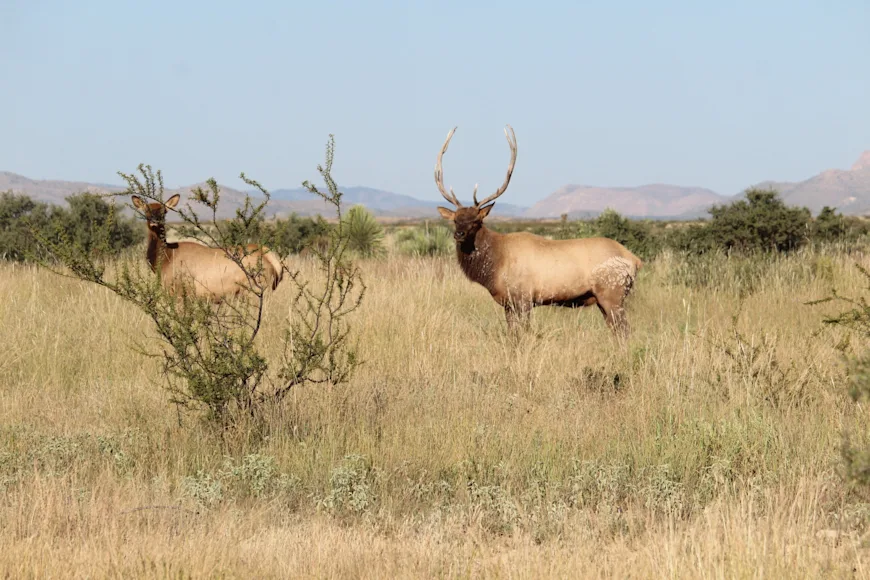A lot has changed since I started hunting elk 20 years ago. There’s more hunting pressure. And draw units require nearly twice the wait they once did. Also, being handy with a diaphragm call and bugle tube is more important than ever. But one fact remains the same. Finding elk in a sea of wilderness can seem like an impossible task.
Elk aren’t tough animals to kill. If you get near them, play your cards right, and never try to beat their nose, chances are good you’ll let carbon or lead fly. What makes elk hunting hard—and presses that 10-percent-success-rate button down and doesn’t let go—is that they’re tough critters to locate.
Think about it. How many elk hunters have you talked to that came West and returned with a story like this: We hunted for 10 days, walked 20 miles per day (always an exaggeration), and we didn’t see a single elk. I’ve not only heard this countless times, but I’ve told it more than I care to admit. I promise the most significant part of the elk-hunting game (bow, rifle, or muzzleloader) is finding animals to hunt. Here’s how to do that.
1. Don’t Slow Down When You’re Scouting for Elk

If elk droppings aren’t greasy, they aren’t fresh. Jace Bauserman
Fifteen years ago, I would show up to my elk location, pack into my hunt area, and start prospecting for sign. I remember getting excited with droppings drained of moisture, wallows that held a faint musk of a rutting bull, and rubs that didn’t look too old. Not anymore. Today, if the crap isn’t greasy, the wallow so pungent it stings my nostrils, and the rubbed pine tree isn’t oozing sap, I keep right on trucking.
Elk are great travelers, and for no other reason, a herd can pull up stakes and move six miles overnight. Elk are where you find them, and if you show up to your hunt area and the elk sign tells you it’s been a while since a bull or cow wandered through the area, you need to move on. Too many elk hunters get too stagnant. They return to the same locale year after year because back in 1978 Grandpa killed a five-point there. Don’t be that elk hunter. You need to be willing to move, even if that move requires you to pack up a spike camp, walk five miles off the mountain, and drive through the night.
2. Use Your Optics to Find Elk

Elk are big animals, but when glassing for them, look for pieces of the animal and not the entire animal Jace Bauserman
There are many destinations out West where you can let your optics do the walking for you. And if you’re hunting such a location, you need to give your glass time to work. Many hunters miss elk when glassing because they are looking for elephants and not ants. A typical raghorn 5×5 bull will push the scale over the 600-pound mark. That’s a big animal, and many hunters get the idea that a big animal should be easy to spot. This is false.
When glassing for elk, slow down and grid-search an entire area from left to right and then right to left. I recommend using a tripod and 15-power binoculars. Look for pieces of the animal and not the entire animal. Doing this will slow down your glassing process, and you’ll start to notice you’re finding sticks that look like horns or a downed aspen trunk that looks like a white rump. When you start seeing these things, you’re glassing well, and if elk are in the area, you’ll find them.
3. Go Night Creepin’
You came to kill an elk, so don’t plan on getting much sleep. Days in the elk woods are long, and the nights can be even longer. When most hunters are watching the inside of their eyelids, you need to be roaming ridges and sending out locator bugles. Even pressured elk will talk when the stars come out, and if you can get one to sound off, you’ll have a good place to start come first light.
If you do get a bull to bugle, don’t call again. It’s nighttime, after all, and bringing the elk close will do you little good. Once the bull bugles, jump on your smartphone and plug the bull’s estimated location into your map. Hunting apps like HuntStand work perfectly for this.
4. Use a Truck or UTV to Find Elk

Using your truck or UTV to move from location to location while prospecting for elk can work very well. Jace Bauserman
When it comes to hunting elk, I feel like I’m as hardcore as they come. I spend the entire offseason keeping my mind and body in top physical shape and have spent weeks at a time in the backcountry. In recent years, however, I’ve discovered I’m finding more elk by using my truck.
I drive access roads, glass, and look for sign. I’ve also gotten numerous bulls to bugle by driving out on a point that separates a pair of drainages and hitting a call or two. As I mentioned earlier, elk are where you find them. Many hunters drive past suitable holes holding elk because they can’t wrap their brains around the fact that elk would be that close to a road. They can be. Three years ago, while hunting public land in Colorado, my elk hunting companions and I arrowed three bulls in 72 hours, and all but one of them were located close to a central road system.
5. If You Can’t Find Elk, Make A Major Move
You’ve done your due diligence—given it a couple of days—glassed and called and looked for fresh sign. Unfortunately, the elk are nowhere to be found. This means it’s time for a significant move. Don’t be afraid to rally the boys, pack up camp, and move hundreds of miles from your current location. Sometimes, for one reason or another, a big move will pay off in spades. Try that spot you’ve constantly threatened to check out or move to an area not known for its elk numbers. Why? Sometimes these elk are visible because they aren’t under constant pressure from other hunters.






